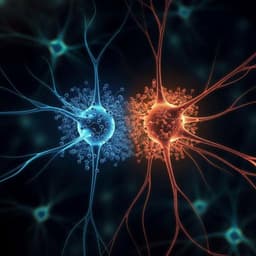
Medicine and Health
TDP-43 facilitates milk lipid secretion by post-transcriptional regulation of *Btn1a1* and *Xdh*
L. Zhao, H. Ke, et al.
This groundbreaking study reveals the pivotal role of TDP-43 in milk lipid secretion, with researchers demonstrating that its absence in mice leads to severe lactation failure. Human milk analysis corroborated a positive correlation between TDP-43 levels and milk output, indicating its potential as a therapeutic target for those struggling with lactation insufficiency. This essential research was conducted by Limin Zhao, Hao Ke, Haibo Xu, Guo-Dong Wang, Honglei Zhang, Li Zou, Shu Xiang, Mengyuan Li, Li Peng, Mingfang Zhou, Lingling Li, Lei Ao, Qin Yang, Che-Kun James Shen, Ping Yi, Lu Wang, and Baowei Jiao.
Playback language: English
Related Publications
Explore these studies to deepen your understanding of the subject.







